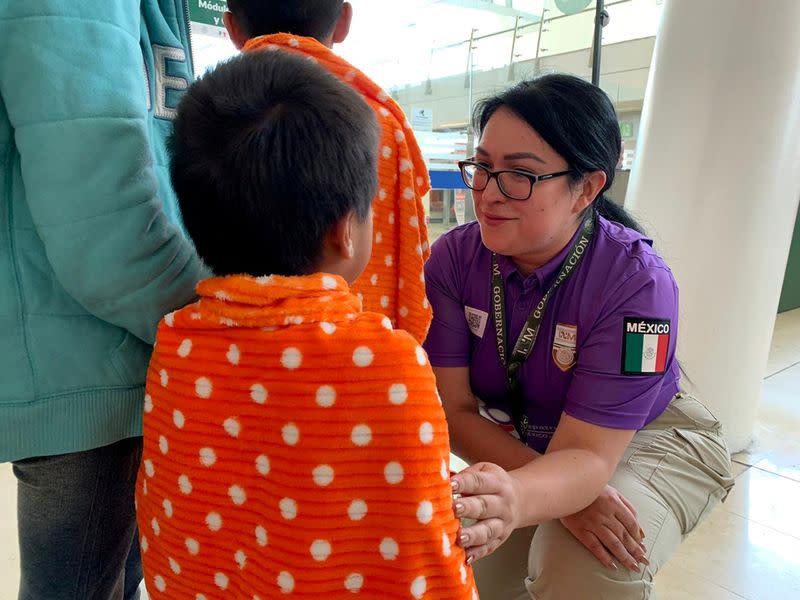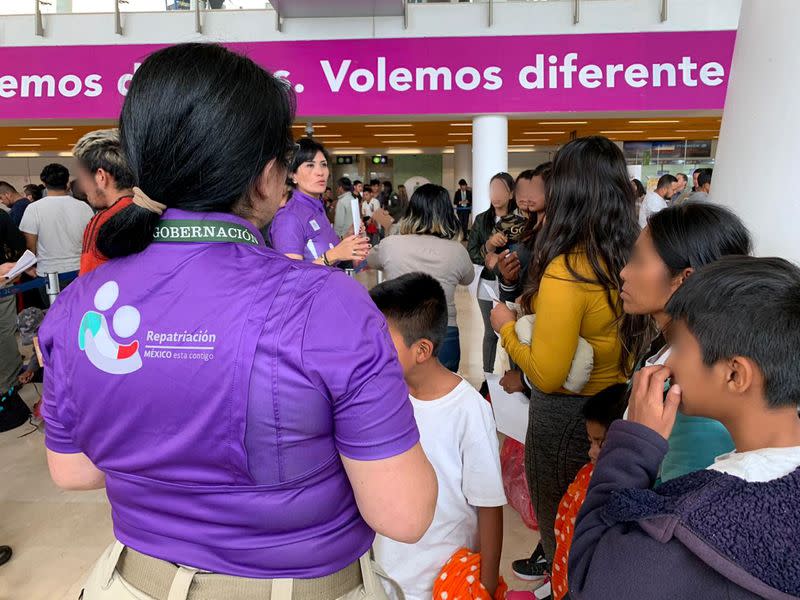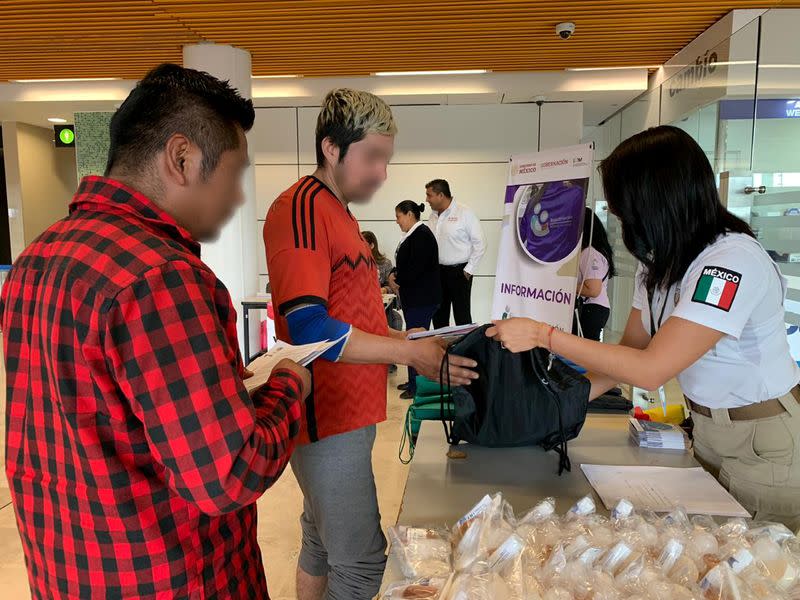U.S. deports Mexicans far from border, may send others to Guatemala
By Ted Hesson and Frank Jack Daniel
WASHINGTON/MEXICO CITY (Reuters) - The United States began flying Mexican deportees to the interior of Mexico on Thursday and a senior U.S. official said Mexicans seeking U.S. asylum could be sent to Guatemala, as the Trump administration seeks to further limit border crossings.
The flight carrying Mexican deportees from Tucson, Arizona, landed in Guadalajara around midday. One immigration shelter in the city said it had been informed of a likely influx of deportees.
U.S. President Donald Trump has made clamping down on unlawful migration a top priority of his three-year-old term in office and his 2020 re-election campaign.
Numbers of Central American migrants apprehended at the border fell sharply in the second part of 2019 after Mexico deployed National Guard troops to stem the flow, under pressure from Trump.
With fewer Central Americans at the border, U.S. attention has turned to Mexicans crossing illegally or asking for asylum. Around 150,000 Mexican single adults were apprehended at the border in fiscal 2019, sharply down from previous decades but still enough to bother U.S. immigration hawks.
In another sign of the new focus on Mexicans, Acting Deputy U.S. Department of Homeland Security Secretary Ken Cuccinelli said an agreement that sends U.S. asylum seekers to Guatemala to request U.S. refuge could also apply to Mexicans and other nationalities.
"As we fully implement the agreement, all populations are being considered, including Mexican nationals," Cuccinelli said on Twitter.
Mexico's foreign ministry did not immediately respond to a request for comment.
FLIGHTS
Mexico said it had requested the flights to keep deportees away from dangerous border cities, while a senior DHS official said the flights were in response to rising numbers of Mexican nationals arrested at the U.S.-Mexico border.
Mexicans made up nearly half of all migrants caught between October and December, according to U.S. Customs and Border Protection data.
John Sandweg, a former acting director of U.S. Immigration and Customs Enforcement during the Obama administration, said the program would help stop Mexican migrants from simply crossing again once they had been deported.
"It's a lot cheaper to just return Mexicans across the border," he said. "But the real benefit is the recidivism rate." A bus ride from Guadalajara to Nogales, a Mexican border city across from the U.S. state of Arizona, can take more than a day.
The flights could be scaled up quickly in the coming weeks, said the DHS official, who was not authorized to speak publicly. The Mexican foreign ministry said the flights would begin on a regular basis in January.
The U.S. official added the return flights may expand beyond Guadalajara, Mexico's second-biggest city, to other parts of Mexico.
Acting ICE Director Matt Albence said in a written statement on Thursday that the interior repatriations would allow Mexican nationals to be returned closer to their homes and discourage future border-crossing attempts.
The flight from Tucson to Guadalajara on Thursday carried approximately 150 Mexican deportees, according to ICE.
The United States has in recent years mainly deported Mexicans to border towns, although in the past it also flew them to cities in the interior.
(Reporting by Ted Hesson in Washington, Mica Rosenberg in New York, Frank Jack Daniel and Lizbeth Diaz in Mexico City; Editing by Richard Chang and Matthew Lewis)




